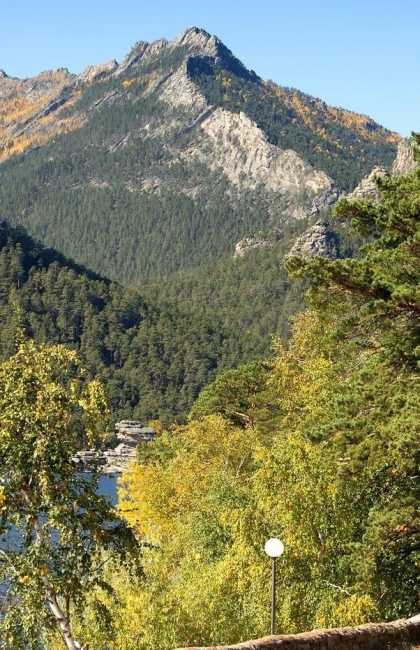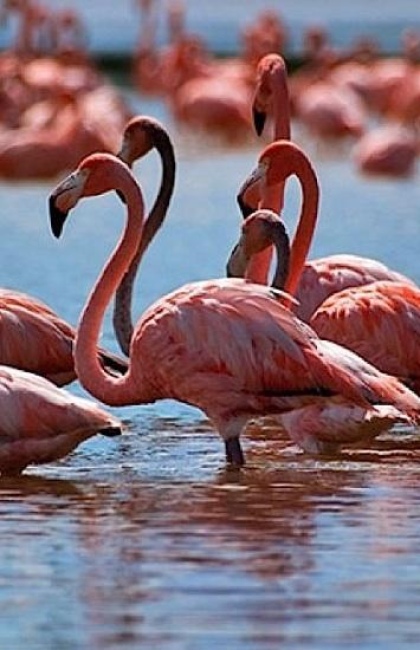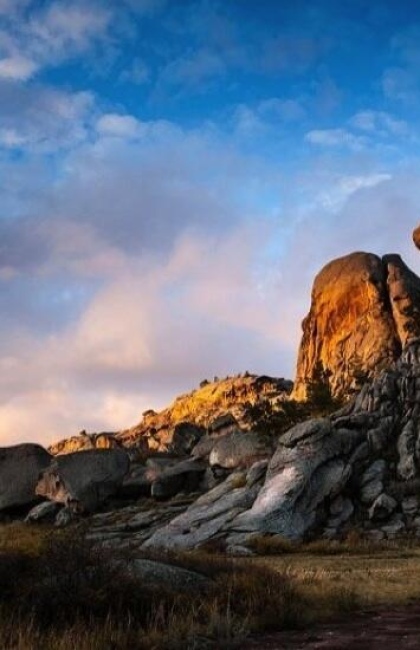Buiratau National Park
Buiratau National Park draws its name from the Kazakh words "buira" (meaning "curly") and "tau" (meaning "mountain"). This name mirrors the unique landscape found within the park. When viewed from a distance, the rocky surfaces of the hills give the illusion of "curly" mountains.
Buiratau spans the Akmola and Karaganda regions, with the Akmola portion known as Ereymentau and the Karaganda section as Belodymov.
Belodymov Section
Buiratau Park stands as a premier destination for eco-tourism, particularly in its Belodymov sector, home to Central Kazakhstan's largest wildlife enclosure for wapitis and bison. In 2020, ten bison were introduced here, successfully giving birth to their first offspring.
Within this sector, you'll find Lakes Azhbay and Bozaigyr. Lake Azhbay welcomes sports and amateur fishing, featuring species like crucian carp and Eurasian carp.
Additionally, the Belodymov section boasts the Karaagash Tract, where black alder thrives. Notably, the park's tallest peak, Akdym, reaching a height of 901 meters (2956 ft), is located in this section. Adjacent to this mountain is a selfie area adorned with a 3-meter sculpture of an argali.
Ereymentau Section
The Ereymentau portion of the park is home to the Falcon Mountains. While not particularly towering, these mountains captivate with their distinct and whimsical shapes, which have been sculpted over time by natural forces. From a certain perspective, they resemble a colossal mushroom, the face of a warrior, or even an enigmatic creature.
One of the Ereymentau section's highlights is the Aulie Bulak spring, which forms a small waterfall as it meanders between the rocks, surrounded by a pine forest.
Flora and Fauna
Buiratau National Park boasts an impressive array of over 600 species of plants. One of the park's botanical treasures, exclusive to Kazakhstan, is the black alder, which thrives in the Ereymentau mountains and the Karaagash Tract.
Other notable plants include Kyrgyz birch, Adonis, Eastern pasqueflower, true lover's knot, Stipa pennata, and many more.
Buiratau's wildlife is equally diverse, with approximately 230 bird species living there. Among these avian residents, 13 species are nesting birds, including crane, steppe eagle, great bustard, hazel grouse, owl, white-headed duck, whooper swan, little bustard, royal spoonbill, and velvet scoter.
The park is also home to 55 species of mammals. Among the more vulnerable inhabitants are the argali, a mountain sheep species. Furthermore, you may encounter elk, deer, roe deer, wild boars, and bison while exploring this biodiverse haven.
Activities
Visitors can partake in guided hikes, fishing, and foraging for berries, mushrooms, and medicinal herbs in designated areas. The park also hosts sporting and environmental education events to engage and educate its guests. Please note that a fee is required for entry and stay within the park.
A natural museum, situated in the village of Molodezhny, offers visitors the chance to observe taxidermied specimens of local wildlife, including wild boars, foxes, hares, deer, marmots, badgers, and various bird species.
How to get there?
If your destination is the Belodymov part, it's closer to Karaganda. From Karaganda, drive to the village of Molodezhny, which is approximately 90 kilometers (56 mi) away. Continue your journey for another 80 kilometers (50 mi) until you reach the park.
If you're coming from Astana, your route will take you through the village of Osakarovka, which is about 110 kilometers (68 mi) from Astana. From Osakarovka, proceed to the village of Molodezhny, and then head directly to the Belodymov part.
To reach the Ereymentau branch, depart from Astana and drive towards the town of Ereymentau, which is approximately 160 kilometers away (99 mi). From Ereymentau, continue your journey to the village of Balykty, covering about 55 kilometers (34 mi). Look out for signs that will guide you to the park's location.
Please keep in mind that within the national park, there are no hotels or cafes available. If you plan to stay for several days, it's advisable to arrange your trip so that you can return to one of the nearby settlements in the evening or set up a tent camp for accommodation.
Other tourist attractions near Buiratau National Park:
- Ereymentau Mountains
- The Town of Ereymentau
- Lake Kobeituz
- Falcon Mountains
- Karaagash Tract
- Olenty Petroglyph Site



